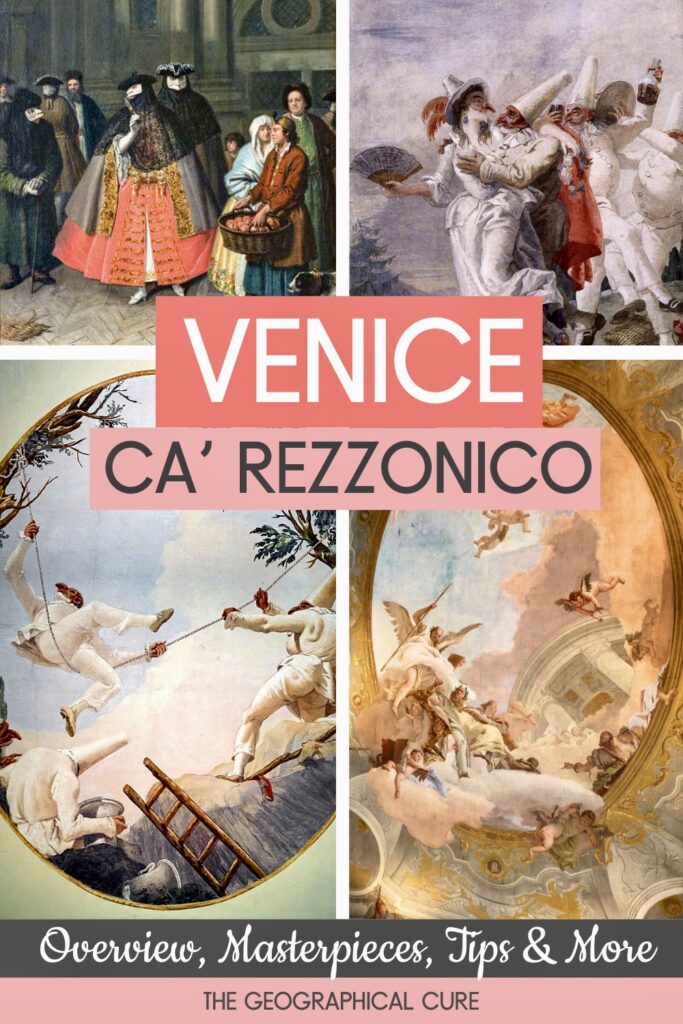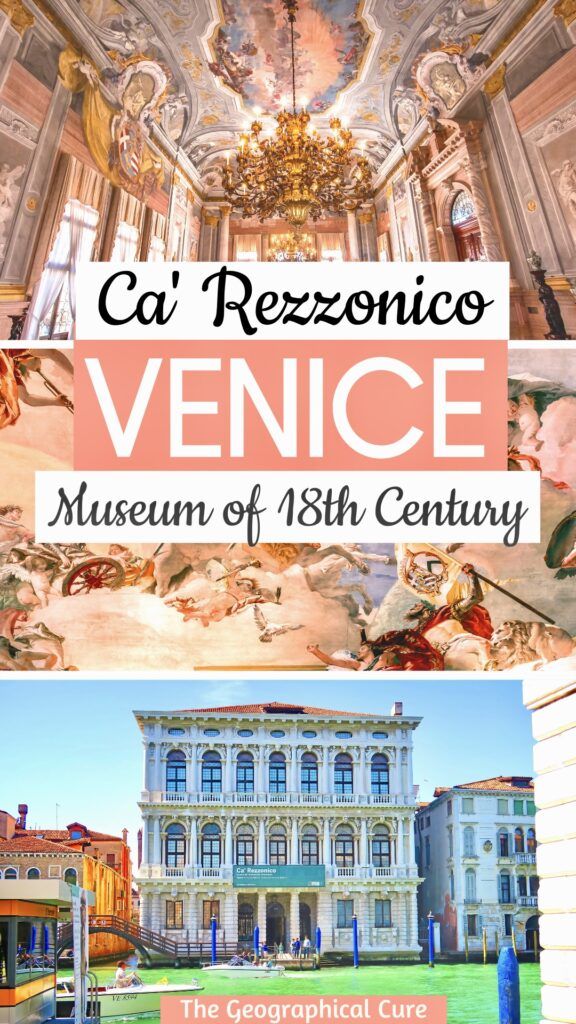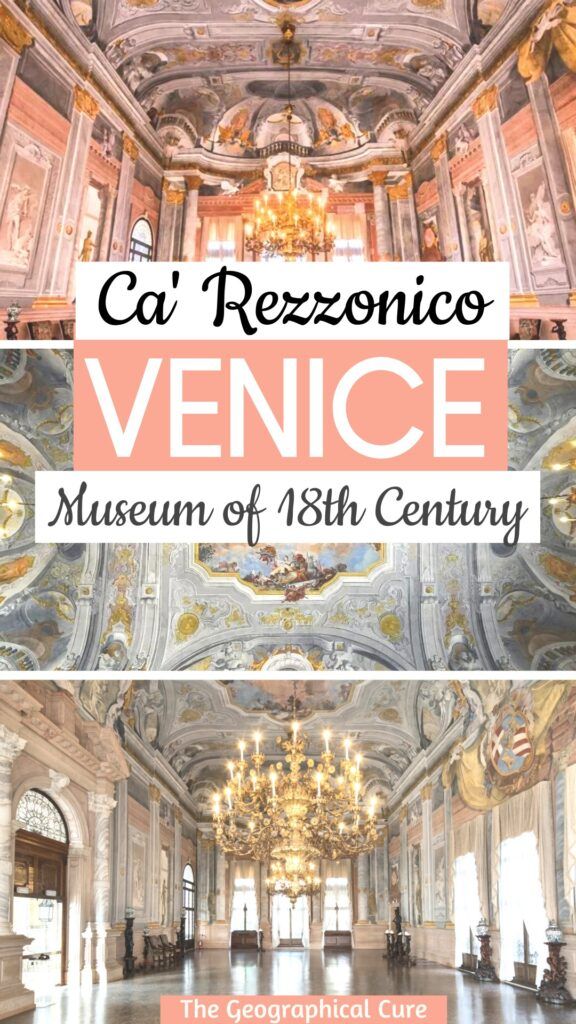Planning a visit to Ca’ Rezzonico while you’re in Venice? It’s a beautiful little museum and I have the perfect guide. It gives you an overview of the museum, identifies must see masterpieces, and gives you tips for visiting.
The Rococo palace is a living tribute to the “Age of Decadence.” It immortalizes 18th century Venetian artists from the twilight years of the Republic.
The in situ museum showcases many artworks that were tailor-made for the palazzo, including some spectacular ceiling frescos by Tiepolo.
>>> Click here to book a ticket to Ca’ Rezzoncio
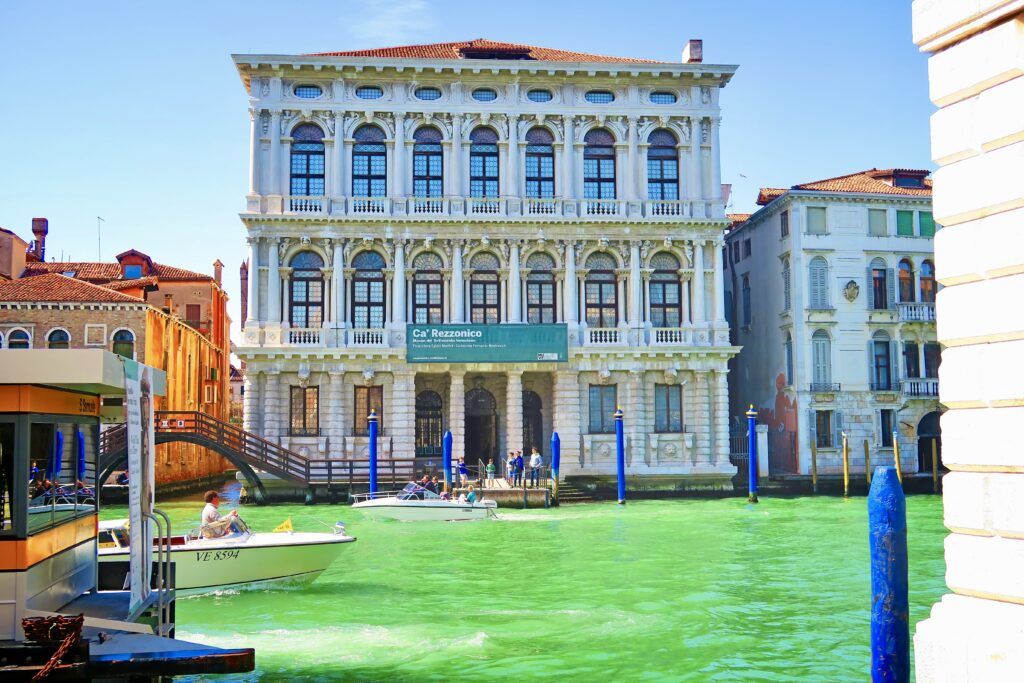
History & Overview Of Ca’ Rezzonico
The Palazzo Rezzonico is a masterpiece attributed to Baldassare Longhena. He was a prominent Baroque architect in Venice, commissioned by the esteemed Bon family.
Building began in 1649. But the building was incomplete when Longhena died in 1662.
Besides that, the Bon’s ambition also exceeded their means. The family was forced to sell off the unfinished palace to the Rezzonico family. They were wealthy merchants from Genoa who used the palazzo as a means to insinuate themselves into the top tier of Venetian society.
To finish and restore the place, they hired another famous architect, Giorgio Massari. More than a century from its groundbreaking, it was completed 1758.
The facade of the palace exudes a sense of symmetry and proportionality, hallmarks of Baroque design. Elaborate windows, adorned with ornate moldings and decorative elements, punctuate the exterior.
Fascinating historical figures left their mark on Ca’ Rezzonico. Casanova, known for his escapades, once resided within its walls before his imprisonment in the Doge’s Palace.
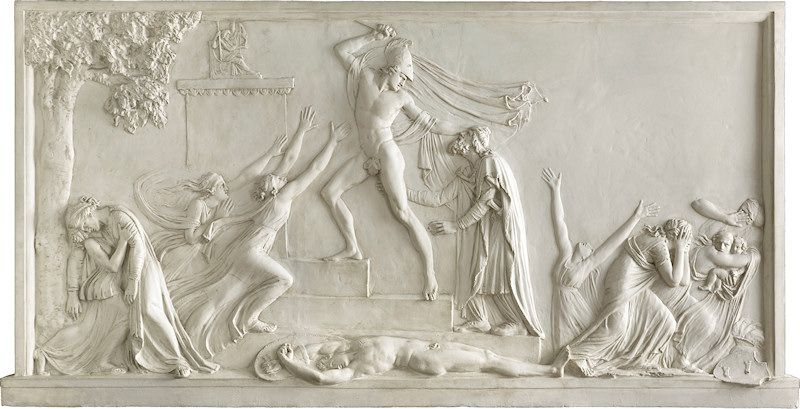
English artist John Singer Sargent found inspiration in its chambers, and the poet Robert Browning bought the palazzo and spent his final days here.
After changing hands again, 1935 marked the start of the history of Ca’ Rezzonico as a museum. The gallery designers decided to restore the palazzo as it would have looked in the Rezzonicos time.
The palazzo thus became a temple to the Venetian 18th century. The museum continues to expand its collections, both by donation and acquisition.
Upon entering, the interior unfolds into a lavish Rococo symphony. The Rococo era was characterized by a focus on aesthetics, elegance, and the whimsical.
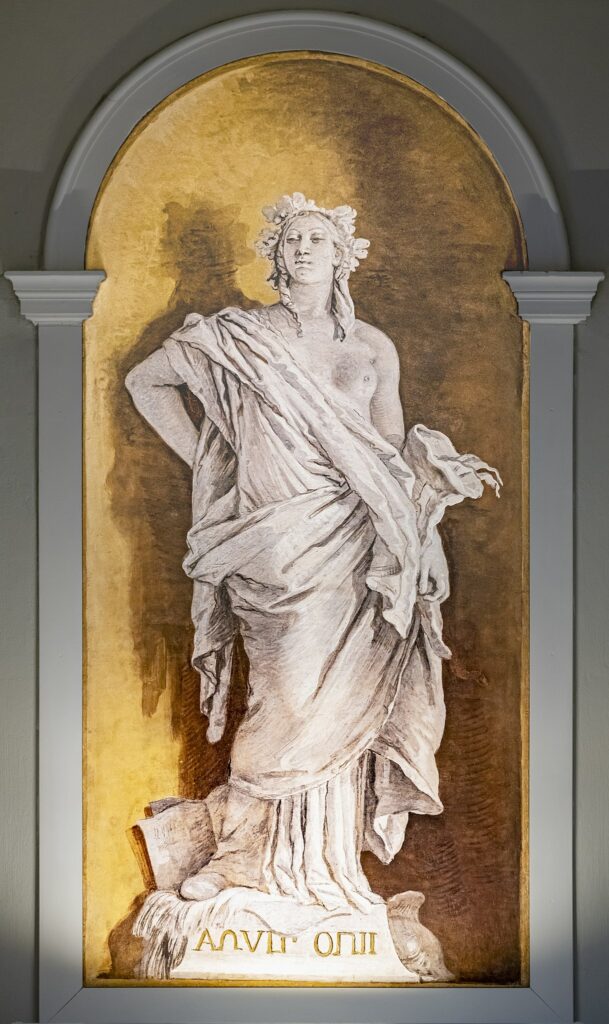
Allegorical figures and themes allowed artists to create visually stunning and elaborate compositions that appealed to the senses and showcased their technical skills.
Elaborate stucco work graces the ceilings, infusing the spaces with a sense of opulence and grandeur.
The interiors are adorned with exquisite furnishings that complement the overall aesthetic. It all creates an immersive experience that transports visitors to a bygone era of aristocratic splendor.
The palazzo itself is a reason to visit. But, within its walls, visitors can admire the brushstrokes of Tiepolo, Giandomenico Tiepolo (his son), Longhi, Canaletto, Guardi, Molinari, and Lazzarini. Their works include both canvases and frescoed ceilings.
There are about 20 rooms over three floors. The most important rooms are the Tiepolo Room and the Picture Portego.
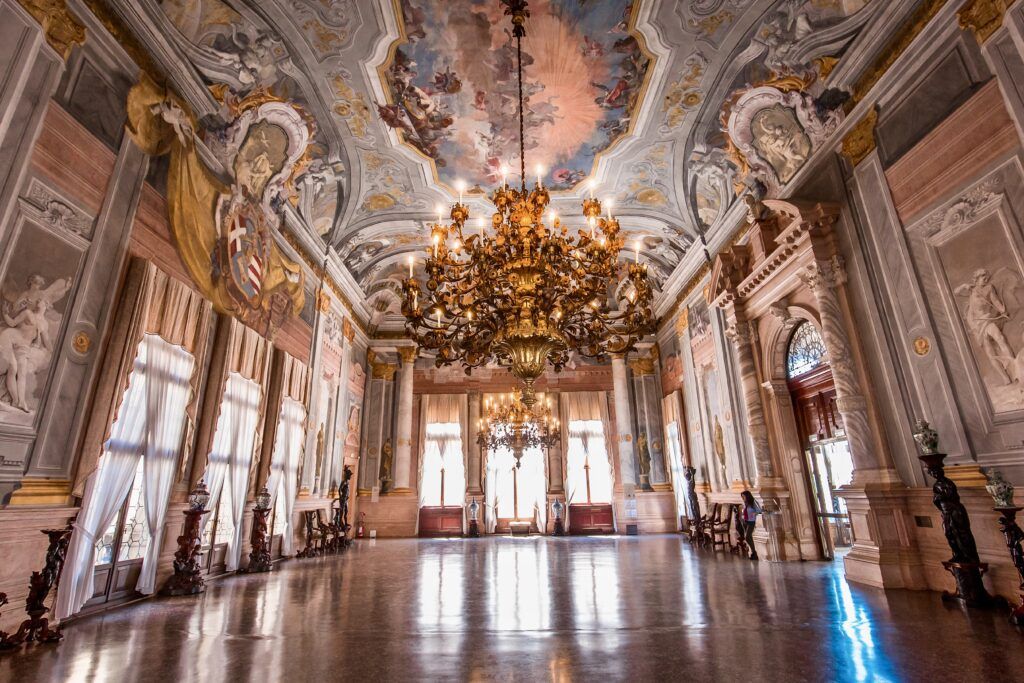
Guide To Ca’ Rezzonico: What To See
Here are some of the top highlights and things to see at Ca’ Rezzonico.
1. Grand Ballroom
The Grand Ballroom was designed to hold receptions, balls, and musical entertainments. It was created by Masari between 1752 and 1756.
The walls are decorated with false architecture painted on the walls. These tromp l’oeils are attributed to Pietro Visconti. One the center of the main walls is the Rezzonico coat of arms.
The mythological fresco in the middle of the ceiling is by Giovanni Battista Crosati. It shows Apollo’s carriage, drawn by horses, rising in flight amid a jumble of allegorical figures.
The ornate chandeliers, made of wood and gilt metal, are beautiful. They are some of the rare surviving decoration from the palazzo’s original furnishings.
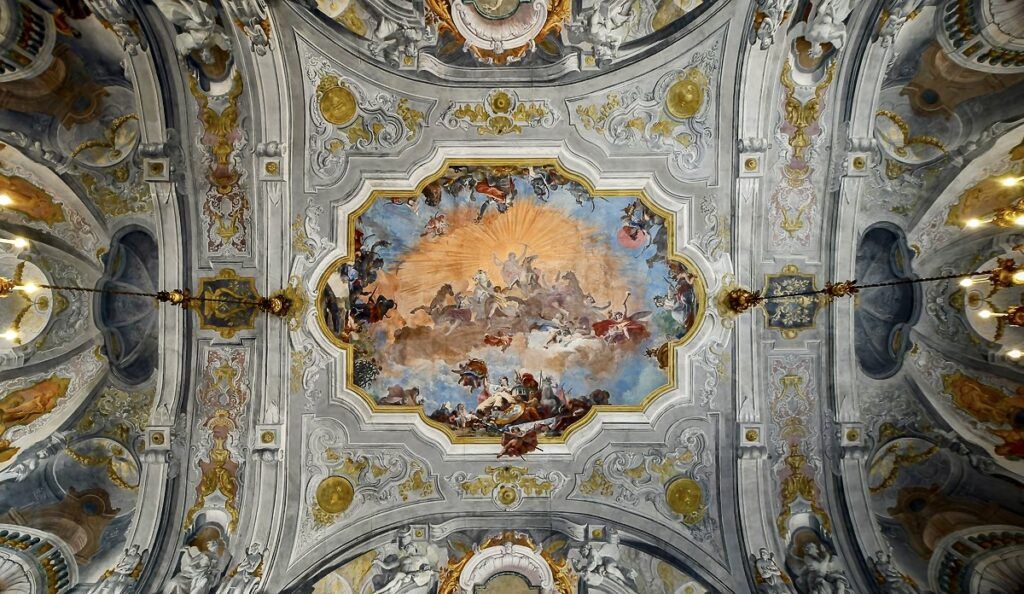
2. Nuptial Allegory Room
This room takes its name from the ceiling fresco by Giambattista Tiepolo. Tiepolo was an Italian Rococo painter known for his grand and imaginative frescoes that adorned many churches and palaces during the 18th century.
It’s a symphony of colors. Against a sky shining with light, four white horses draw Apollo’s wagon. It bears Apollo and his bride Hecuba. The scene is surrounded by allegorical figures of the virtues and flocks of doves and putti.
The red walls of the room are dominated by a 1758 portrait of Pope Clement XIII Rezzonico by German Neo-Classical artist Anton Menges.
It’s considered the first image of the pope. He’s clad in bright red robs with red cheeks, his hand making a blessing gesture.
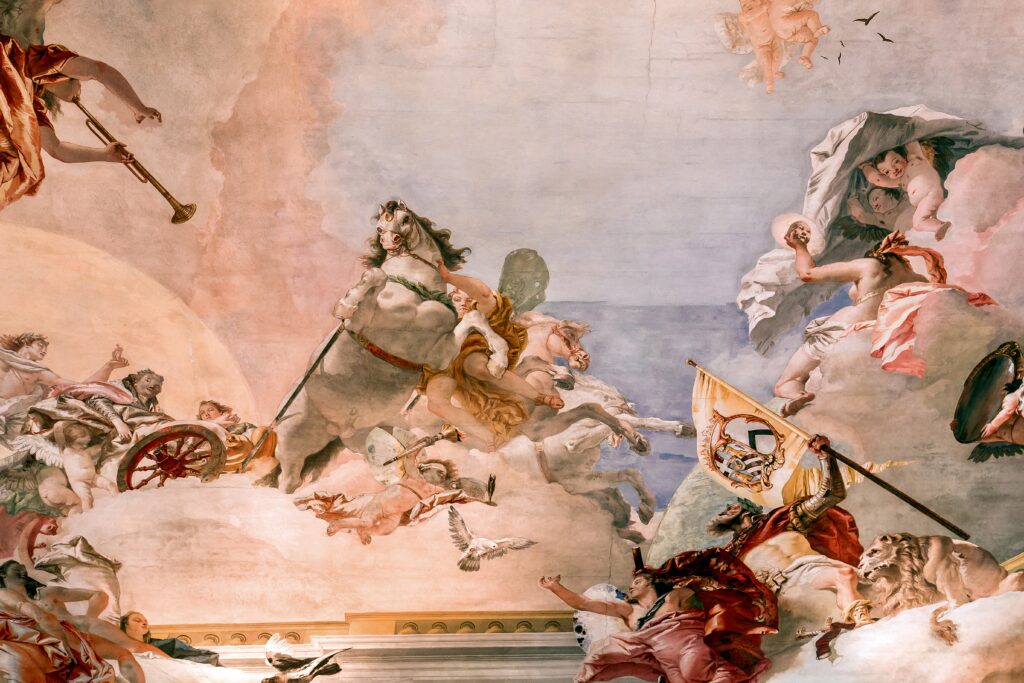
3. The Chapel
The small chapel overlooks the Rio de San Barnaba canal in the Dorsoduro.
The canal is spanned by the Ponte dei Pugni, a bridge famous for the historical tradition of fistfights that used to take place there.
The walls are covered in original gilt stuccos on a white background, classic Rococo. The key artwork is Francesco Zugno’s altarpiece, Virgin and Saints.
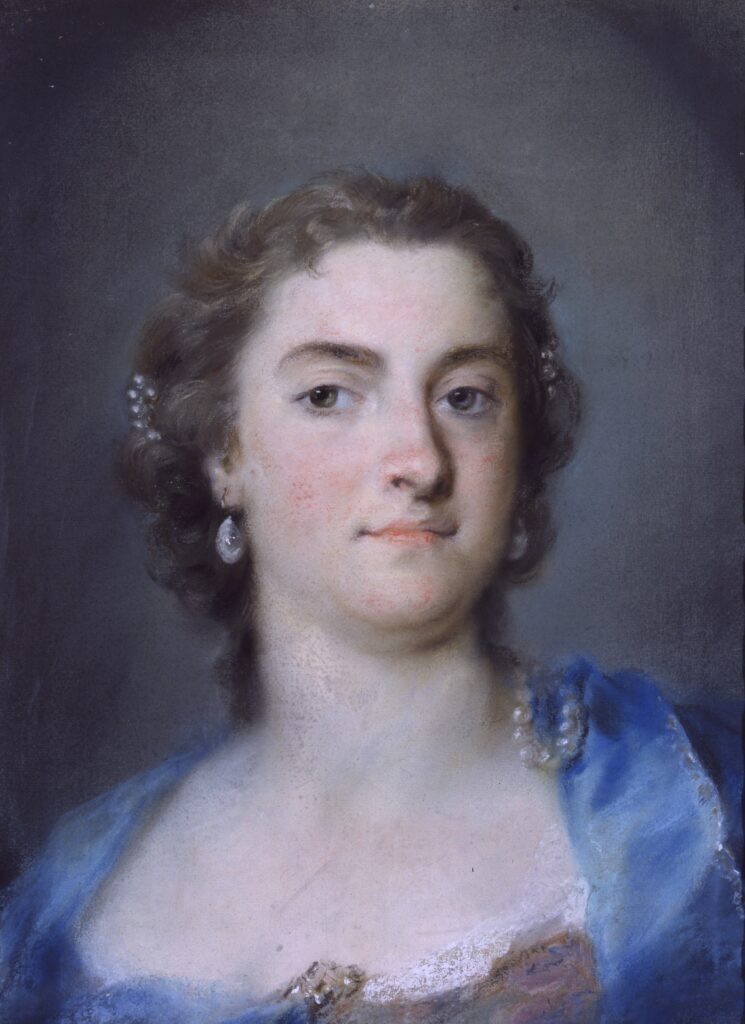
4. The Pastel Room
The Pastel Room, Sala del Pasticcio, was historically used for gatherings, social events, and leisure activities. It’s adorned with intricate decorations, including pastel-colored panels and ornate stucco work.
The ceiling fresco depicts the Triumph of Poetry over her sister arts. It’s framed with ornate stucco work. Though painted at the same time as Tiepolo’s Nuptial Allegory, art historians attribute it to Gaspare Diziani.
There are several portrait masterpieces by Rosalba Carriera. She was reknowned for her remarkable skill in creating luminous portraits and genre scenes using the medium of pastels.
There are also portraits of Tiepolo’s family.
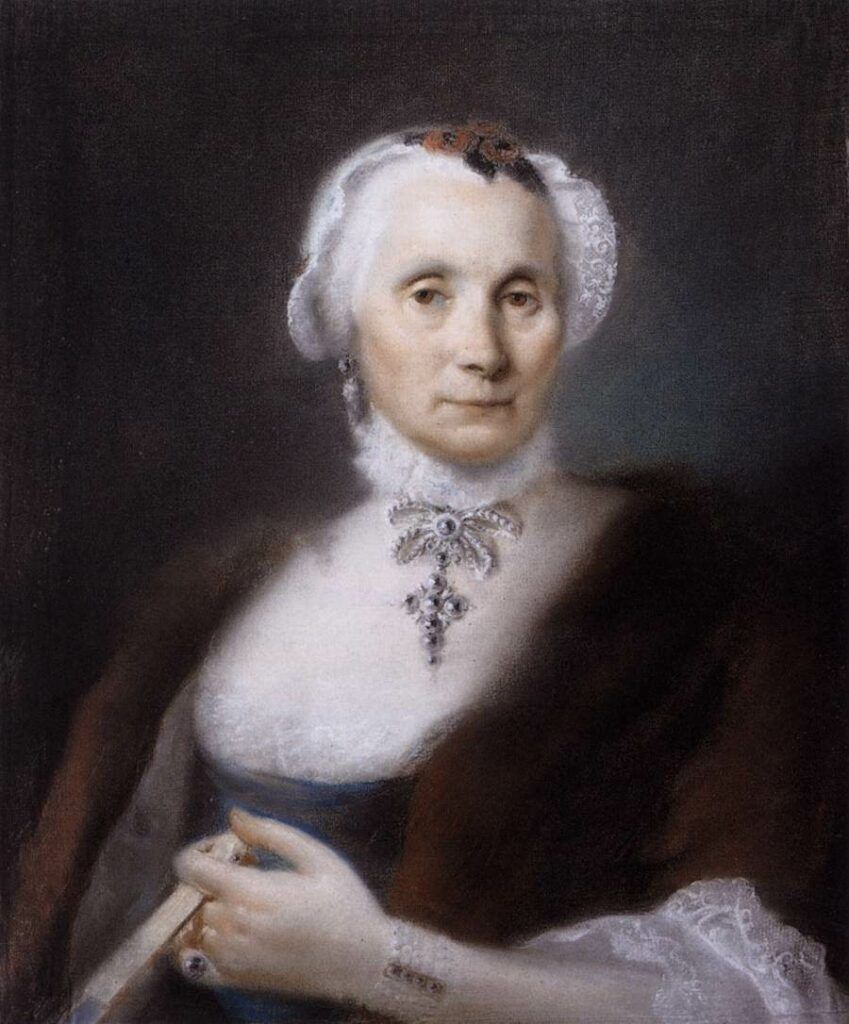
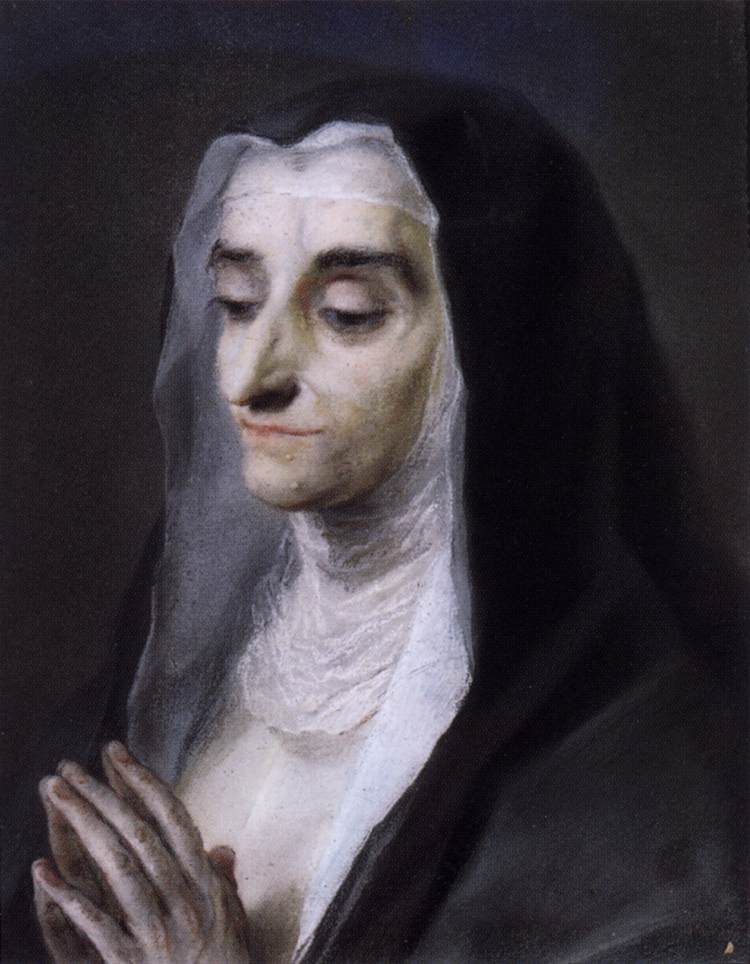
5. The Tapestry Room
This room takes its name from the three large Flemish reproduction tapestries on the walls.
There are also some magnificent pieces of gilt carved furniture. It’s one of the most notable sets of Venetian made Rococo furniture that is still intact.
The ceiling fresco depicts the Triumph of the Virtues. There is a beautiful white Murano glass chandelier and an extremely rare yellow lacquered door with chinoiserie from 1760.
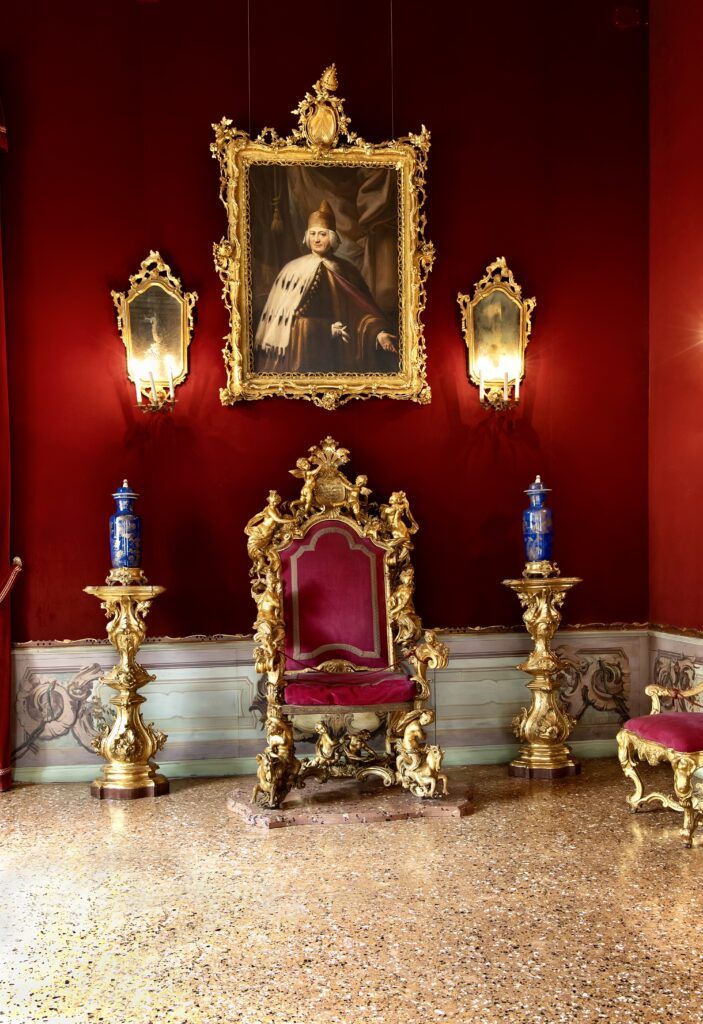
6. Throne Room
The Throne Room is a bright plush room upholstered in red velvet. It faces the Grand Canal and the Rio di San Barnaba.
The room takes its name from the gilt carved wooden throne, from 1730, to the left of the entrance. It’s carved with putti, nymphs, and seahorses. And there’s other gilded furniture in the room.
It’s not known exactly what the room was used for. But it was likely intended for entertainment purposes.
The ceiling fresco, Allegory of Merit, is by Tieopolo. Merit is shown as an old bearded man in a gold robe crowned with laurels.
He’s surrounded by the usual repertoire of allegorical figures and putti. The work has the artist’s usual sumptuous color scheme and inventive composition.
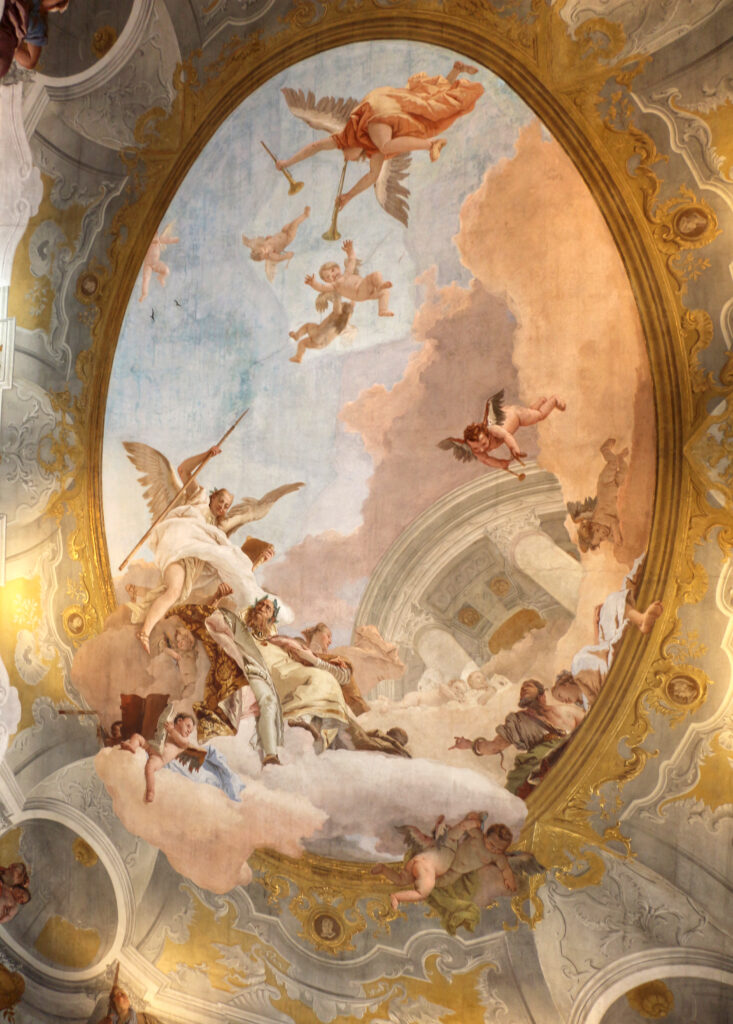
7. The Tiepolo Room
This room features the third of four ceiling frescos by Tiepolo. It depicts Nobility and Virtue Defeating Ignorance.
It’s not original to the palazzo like the artist’s other frescos. The Venice City Council purchased it in 1934 and restored it in 2002.
The theme is one that was often requested by Venetian clients. Like many allegorical works, it seems somewhat self-celebratory.
The virtues are in light colors. Ignorance, in dark colors, falls downward. There’s a sexuality to the figures, reflecting the influence of Veronese on Tiepolo.
There are various other paintings in this room, works by Alessandro Longhi, Giuseppe Angelo, and Giandomenico Tiepolo. There is also some impressive walnut furniture. One bureau is placed in front of windows overlooking the Grand Canal.
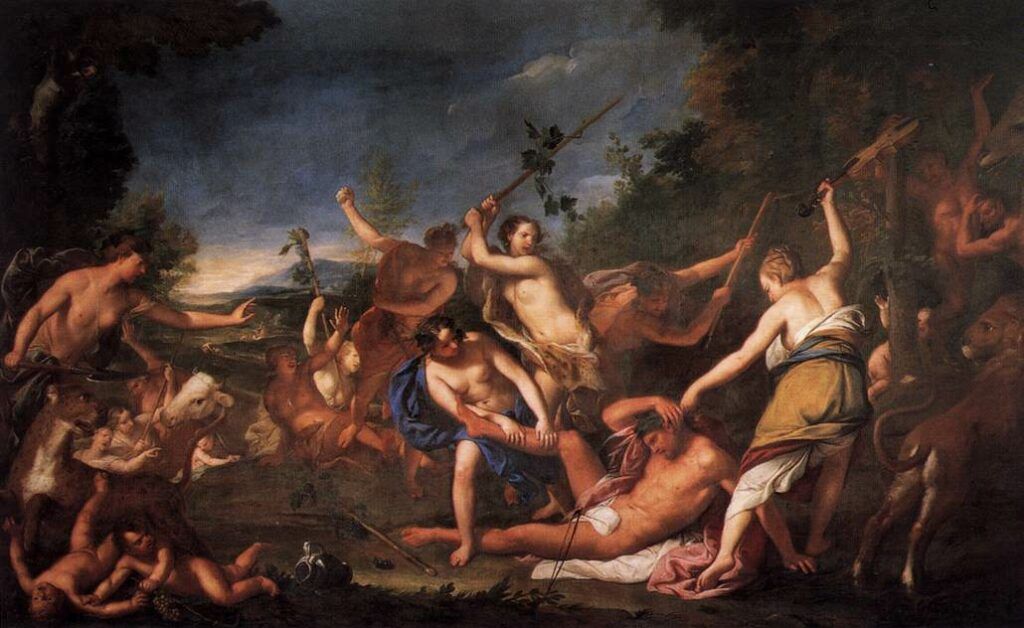
8. The Lazzarini Room
This room features three large mythological canvases, one by Gregorio Lazzarini. He was Tiepolo’s teacher.
There are also paintings by Molinari, Antonio Belluci, and Francesco Maffei.
9. Brustalon Room
This room is filled with decorative carvings by Andrea Brustalon.
They are considered the finest examples of Veneto wood craving in the early 18th century. There’s also a splendid series of 25 vases.
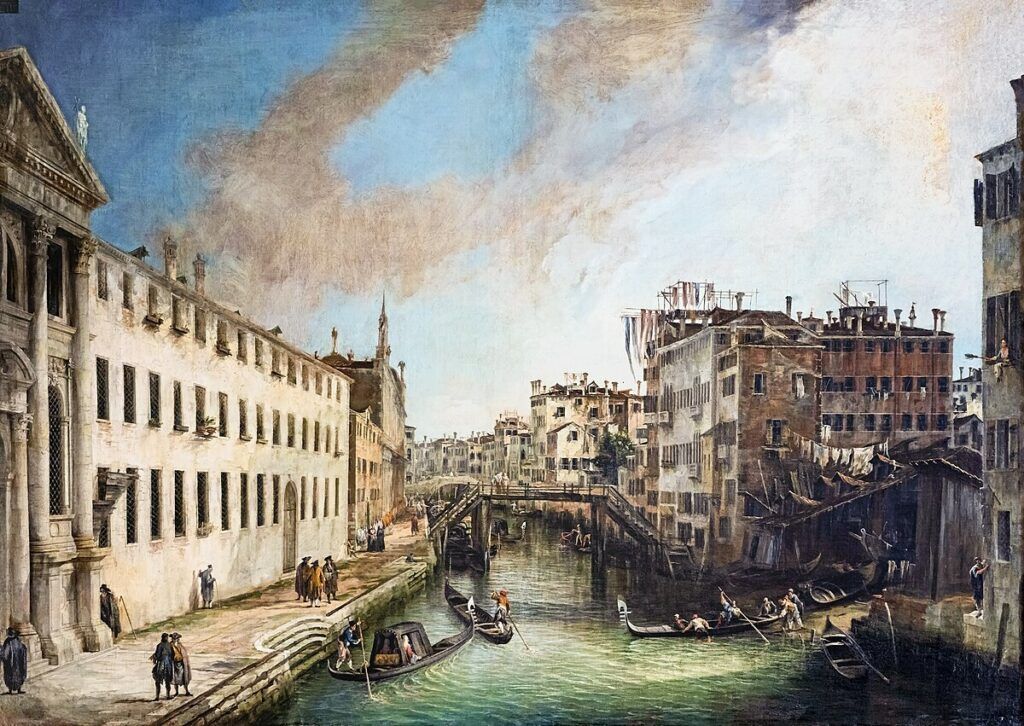
10. The Painting Portego
To me, this is the one of the most important rooms in Ca’ Rezzonico for art lovers. It served as the palace’s picture gallery. It houses the museum’s most important paintings.
You’ll find paintings by Antonio Guardi, Francesco Guardi, Gian Antonio Pellegrini, Canaletto, Francesco Zuccarelli, and Bernardo Strozzi.
In particular, there are two important early masterpieces by Canaletto, the View of the Rio dei Mendicanti and the View of the Grand Canal from Ca’ Blabi towards Rialto.
Canaletto is famous for his Venetian cityscapes. His works offer a timeless glimpse into the bustling life and stunning vistas of Venice during its Golden Age.
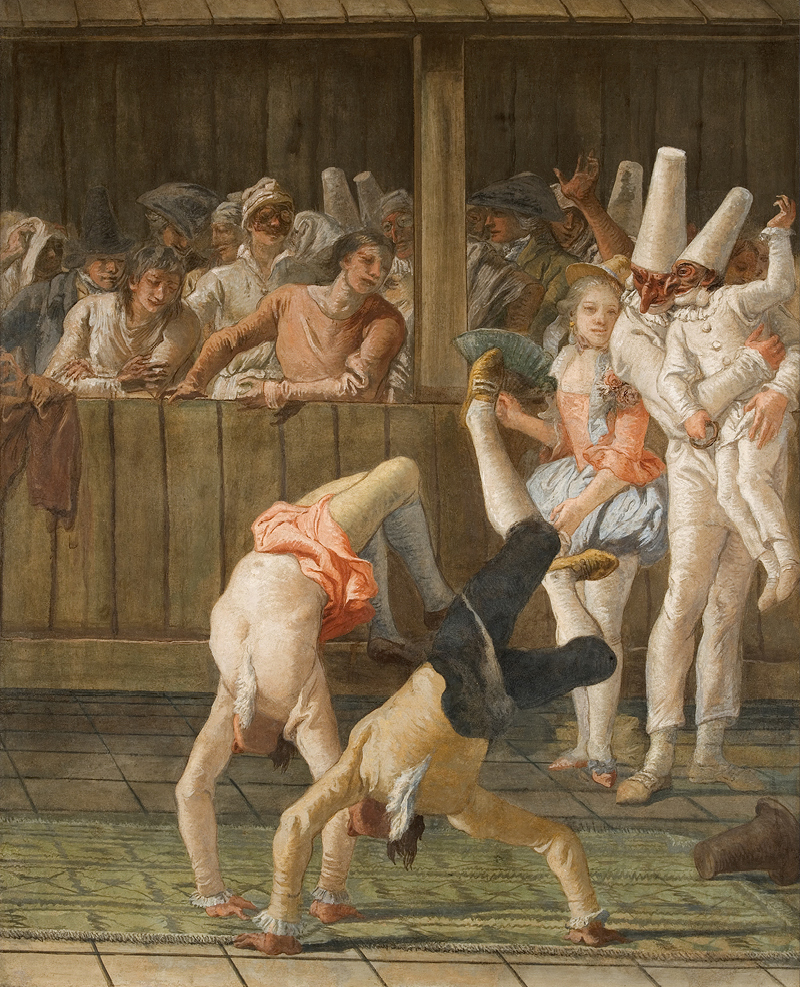
12. Giandomenico Tiepolo Frescos from the Zianigo Villa
The next part of the museum has some extraordinary frescos by Giandomenico Tiepolo from his family’s country villa.
The artist painted them over a long period of time from 1759 and 1797. They weren’t painted for the public, but rather for the pleasure of his family. They were his last and greatest work.
The frescos depict stories of Punchinello, scenes of villa life, and games. They are like a cultural snapshot of the tail end of 18th century Venice.
The Monod Novo portico has some of the most celebrate works from the cycle — New World, Minuet in Villa, and Promenade.
New World is the most important. It depicts a small crowd of country folk and nobles. They throng around a huckster in a booth with his magic lantern.
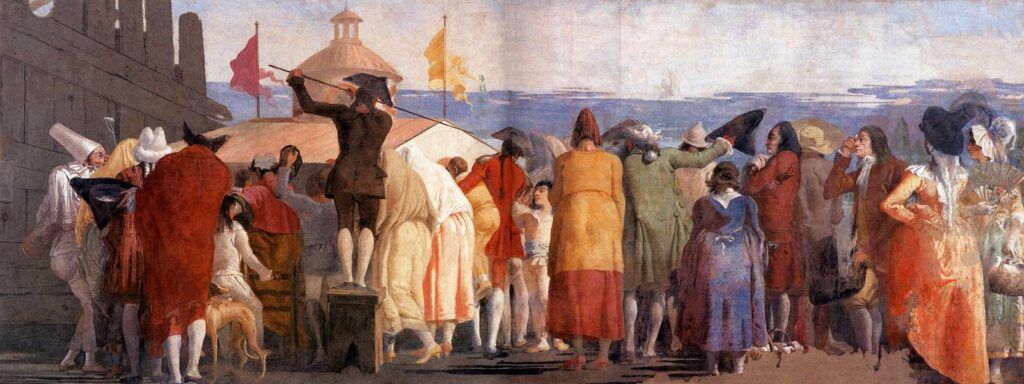
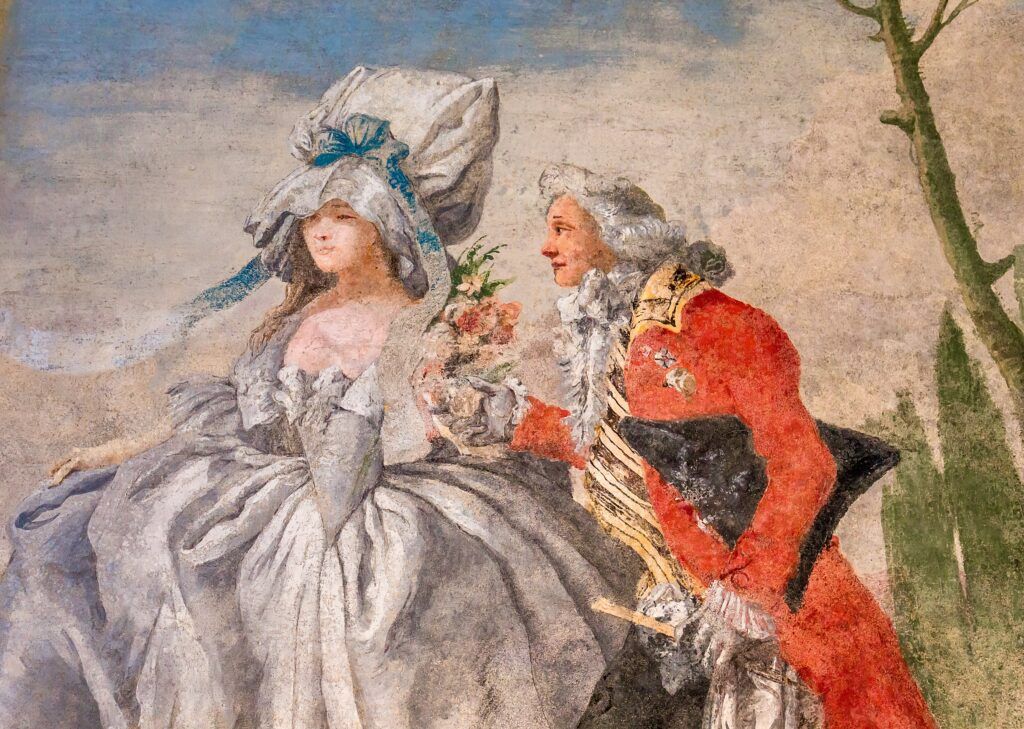
You can’t see their faces and the very show they’re watching is hidden, making for a rather bewildering and charming painting. On the left, there’s a curious Punchinello holding a pitchfork.
The Punchinello room is to the right of the New World painting. It houses whimsical frescos from the life of Punchinello.
Punchinello is a well-known character from the Italian commedia dell’arte tradition. Tiepolo paints him in the usual costume — hunchbacked body, hooked nose, a loose white smock and pointed hat. He’s associated with satire and social commentary.
The three big wall scenes show Punchinello and the Acrobats, Punchinello in Love, and Punchinello’s Swing.
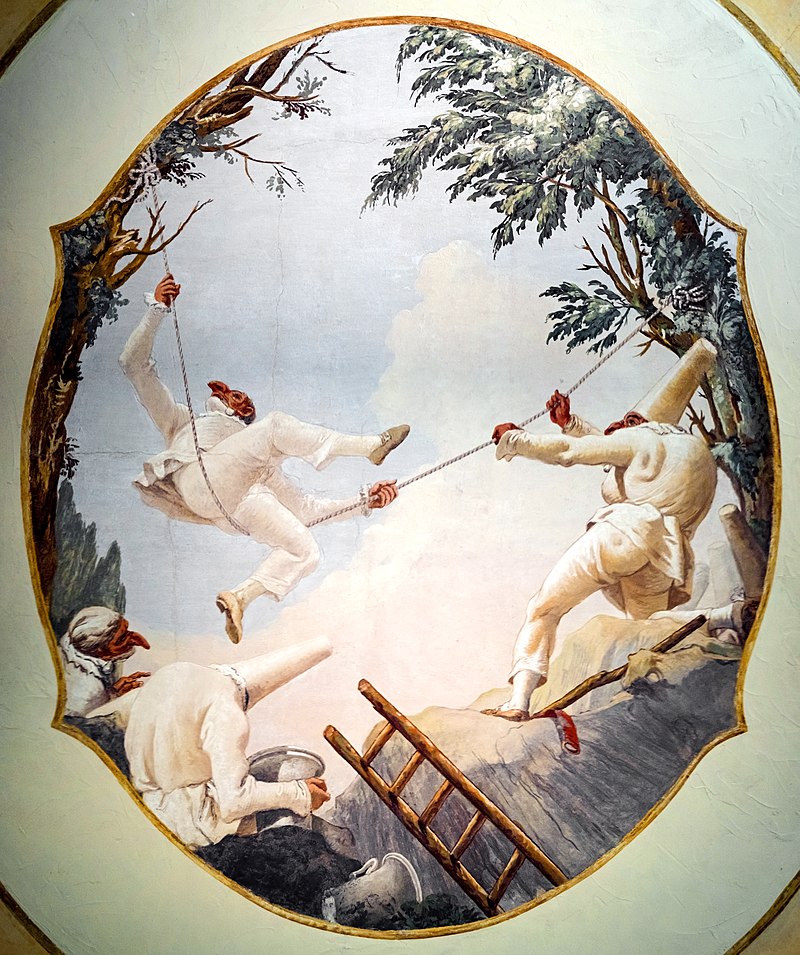
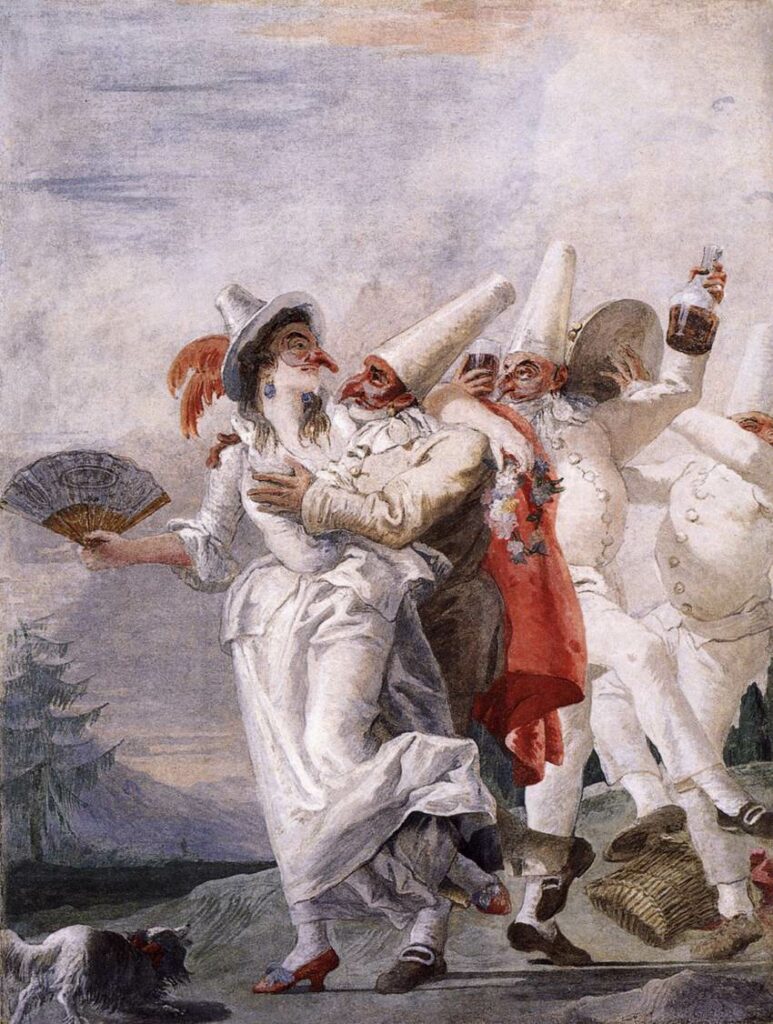
14. Parlour Room
The Parlour Room is home to two of the most celebrated canvases by Francesco Guardi: The Parlour of the Nuns of San Zaccaria and The Ridotto at Palazzo Dandolo in San Moise.
They were originally attributed to Pietro Longhi. After much debate, historians agree that they were by Guardi.
You will also find two portraits by Longhi and a prepatory work by Tiepolo.
The room itself is rather drab, with beige wallpaper, gray marble floors, and yellow green furniture.
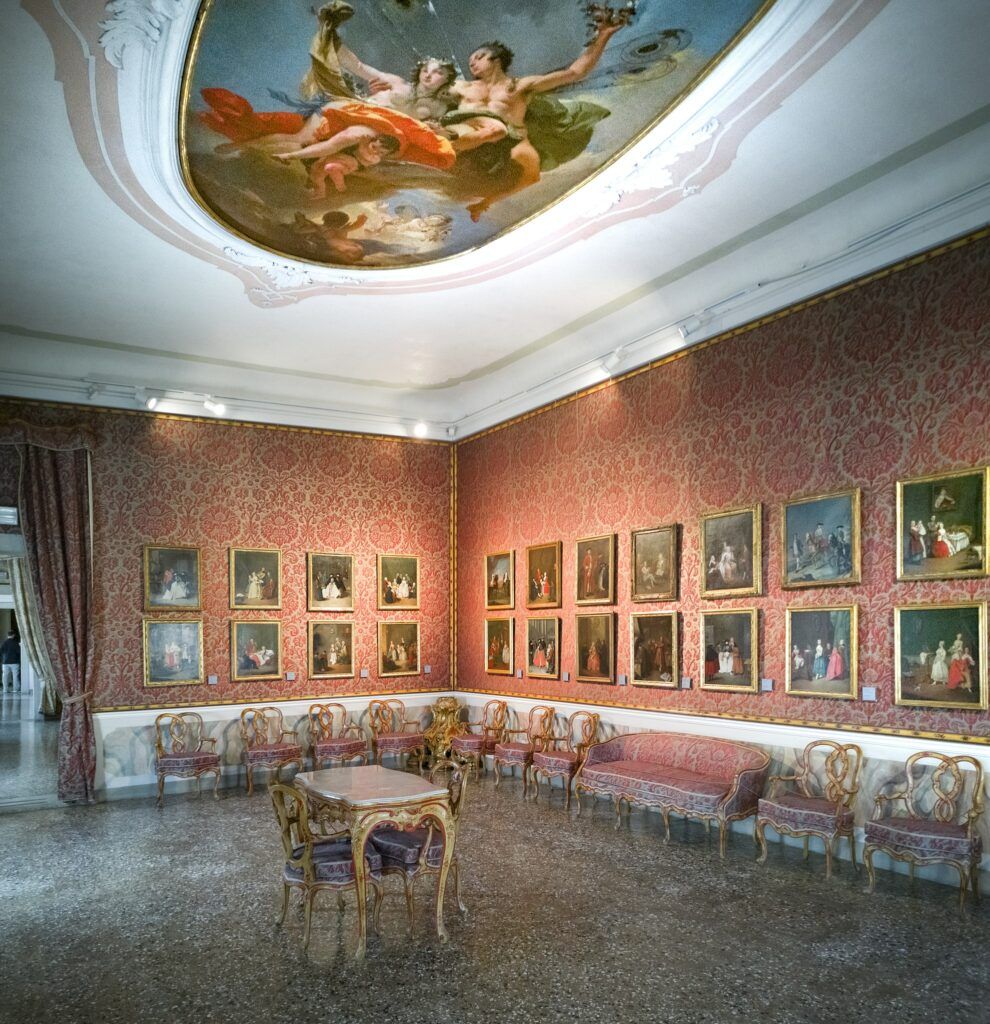
15. Longhi Room
This room is home to a mythological ceiling fresco by Tiepolo and 28 genre canvases of Longhi.
The Tiepolo fresco, Triumph of Zephyrs and Flora, is an early work by the artist. It’s an allegory of spring and has his usual lively and sensual character and brilliant colors.
It was painted for a wedding and later moved to the museum. But, oddly the two main characters look the opposite of joyous, with melancholic expressions.
Longhi’s canvases, in contrast, feature scenes from daily life referred to as “conversation pieces.” They depict domestic interiors, public gatherings, theater performances, and various moments of leisure. The paintings are not shown in chronological order, but grouped by subject.
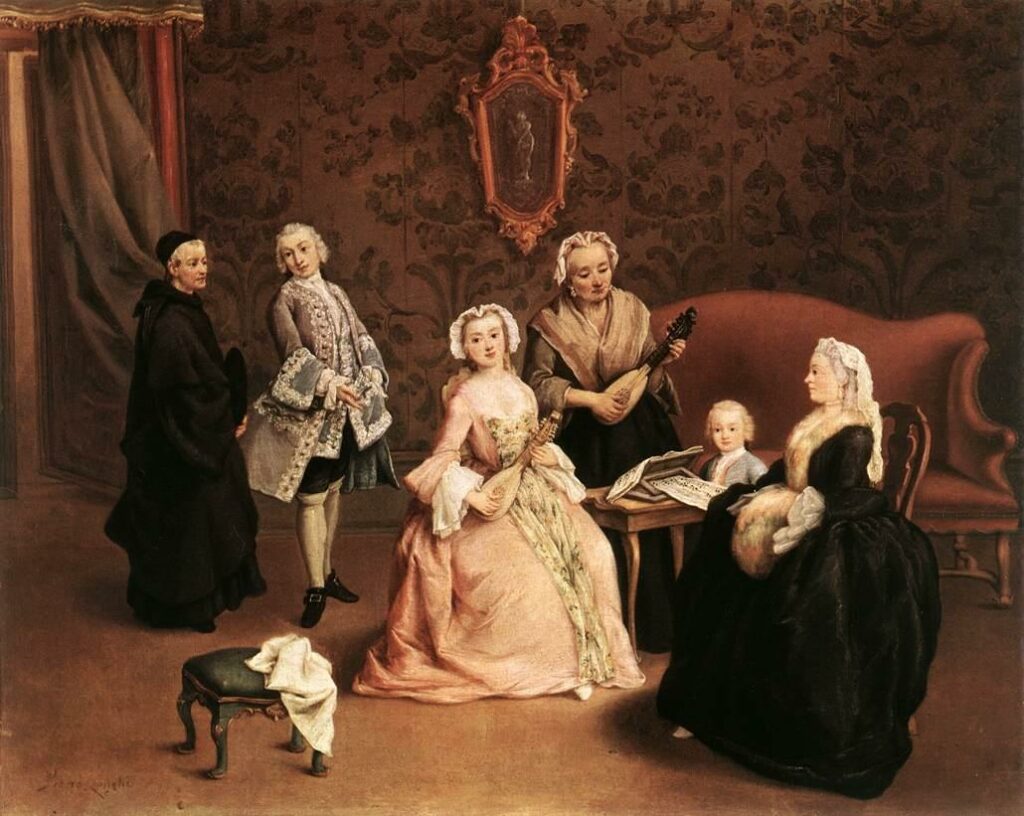
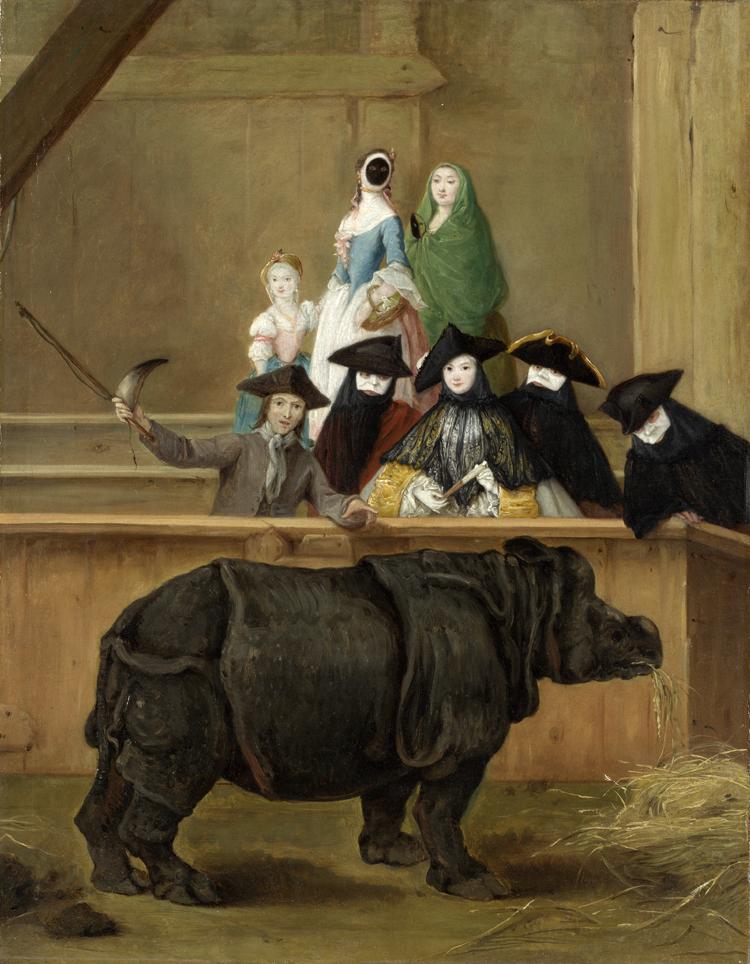
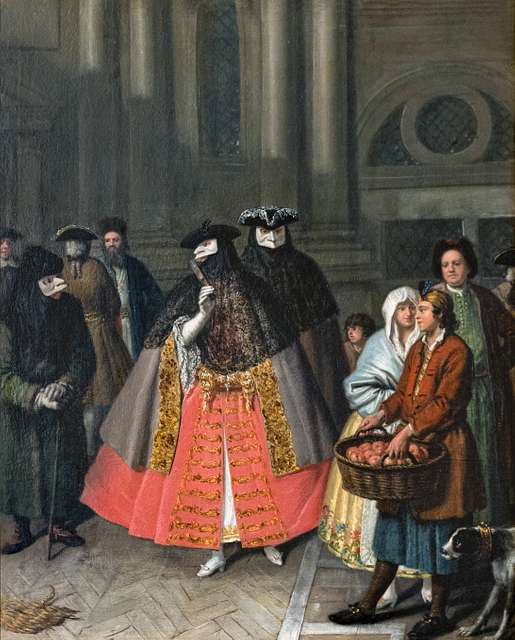
One of the most notable pieces is the Exhibition of the Rhinoceros. It records the arrival of a rhino in Venice for the annual carnival. Other works to see are The Fortune Teller, Conversation Between Dominoes, and Family Concert.
16. Guardi Room
The Guardi Room has three frescos by Antonio Guardi, an outstanding Venetian landscape painter. They were covered with whitewash in the 19th century, but then rediscovered during subsequent restoration work.
After restoration, they were brought to the museum. They are, naturally, not in the best shape. Yet, they still clearly show his Rococo decorative talent.
17. Egidio Martini Picture Gallery
This gallery is spread out on the third and fourth floors. You reach it via a staircase from the Portego. The gallery offers a comprehensive overview of 17th and 18th century Venetian painting.
Practical Guide & Tips For Visiting Ca’ Rezzonico
Address: Sestiere Dorsoduro, 3136, 30123 Venezia
Hours: The museum is open from 10:00 am to 6:00 pm on Monday and Wednesday through Sunday. Closed Tuesdays.
Ticket Price: 10 €. Click here to book a ticket on the palace website.
Pro Tips:
Backpacks will have to be checked. But small handbags are fine to bring in.
There is plenty of signage in each room, which improves a visit. Though reading them all is bit of a Herculean task. There’s also a bookshop and cafe.
Is Ca’ Rezzonico Worth Visiting?
If you are an art lover, Rococo connoisseur, or palace fiend, Ca’ Rezzonico is a must visit. If you like opulent places and are somewhat indifferent to Rococo art, it’s still worth seeing for the interior and the splendid views of the Grand Canal.
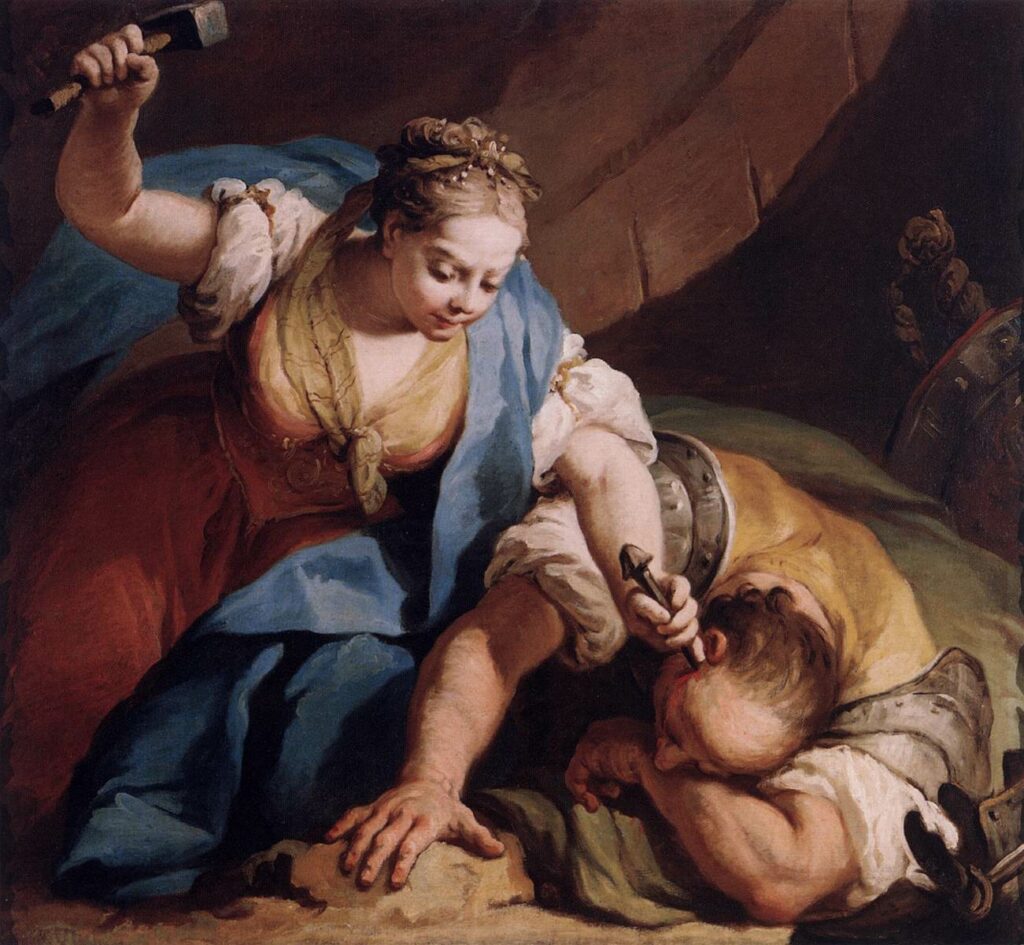
If you only have a short time in Venice, I would recommend that you visit the Peggy Guggenheim Collection (modern art) or the Galleria dell’Accademia (Venetian Renaissance art) instead.
How Long To Spend At Ca’ Rezzonico?
I would plan to spend 1-2 hours at the museum, depending on your level of interest. I was there for 2.
If you only have a short amount of time, I would focus on three areas — the Tiepolo Room, the Painting Portego, and the Giandomenico Tiepolo paintings from the Zianigo Villa.
I hope you’ve enjoyed my guide to Ca’ Rezzonico. You may enjoy these other Venice travel guides and resources:
- One day in Venice itinerary
- 2 days in Venice itinerary
- Guide to the Dorosduro
- Guide to San Polo
- Guide to St. Mark’s Basilica
- Guide to the Doge’s Palace
- Top Attractions on the Grand Canal
- Venice art bucket list
- How many days to spend in Venice?
- 30+ tips for visiting Venice
- Guide to the Frari Church
If you need a guide to Ca’ Rezzonico, pin it for later.

